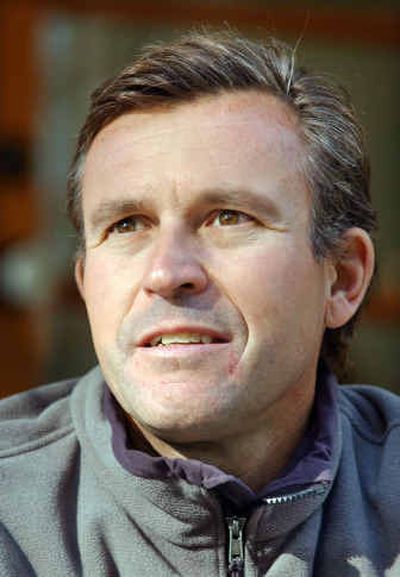Washington man rises to lofty goal

KATMANDU, Nepal – Climber Ed Viesturs reached the summit of Nepal’s towering Mount Annapurna on Thursday, becoming the first American to scale all the world’s tallest peaks, reports from the mountain said.
Viesturs, 44, of Bainbridge Island, Wash., reached the 26,540-foot summit in the afternoon, which was the last of the world’s 14 peaks that are higher than 26,240 feet in height.
He has become the 12th mountaineer to achieve the feat. The first was Italian Reinhold Messner.
According to the Web site www.firstandbest.msn.com, which sponsored and followed his trip, Viesturs reached the summit with Finnish climber Veikka Gustafsson.
The trip to the summit took longer than expected because windy conditions slowed him down on the last leg of his journey.
Viesturs, described as America’s leading high-altitude mountaineer, has scaled Mount Everest, the world’s highest mountain at 29,035 feet, six times.
Viesturs was on Everest on May 10, 1996, when eight people died in the deadliest single tragedy in the mountain’s climbing history, an event chronicled in Jon Krakauer’s best seller, “Into Thin Air.”
He also was involved in the making of the IMAX film “Everest.”
Though Annapurna is the 10th highest peak in the world, it is considered to be one of the most difficult to climb.
It was also the first of the highest mountains to be conquered – by French climber Maurice Herzog in 1950.
Viesturs began his mission some 16 years ago by scaling Mount Kangchenjunga, the third tallest mountain, which lies along the border between Nepal and India.
Like many of his previous climbs to other mountains, he scaled Annapurna without using bottled oxygen to aid breathing, which is typical for most climbers at higher altitude where the air is thin and oxygen level low.
“When I first attempt a Himalayan peak, I climb without bottled oxygen, even if it keeps me from reaching the summit. My personal goal is to see how I can perform, to experience the mountain as it is without reducing it to my level. For me, how I reach the top is more important than whether I do,” he said on his Web site.